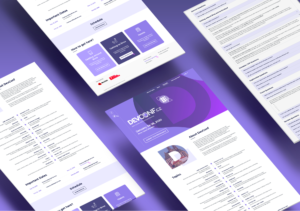Red Hat 블로그
 Collaboration in open source is usually considered in broad terms: communities, workflows, and processes. What is sometimes forgotten, though, is that often the best part of open source is getting a few people in a room together and just letting them… create.
Collaboration in open source is usually considered in broad terms: communities, workflows, and processes. What is sometimes forgotten, though, is that often the best part of open source is getting a few people in a room together and just letting them… create.
This was the approach adopted by DevConfCZ’s visual identity team, a group of three volunteers who took it upon themselves to update and coordinate the visual elements of the tech conference held in Brno, Czech Republic. And while much of their work was done online, as so much collaboration is done these days, often their best work was performed getting together, listening to music, and just bouncing ideas off of each other.
The experience for the team, which was initiated by Tereza Novotna, was unique in several ways. When Novotna first began working with the DevConfCZ organizers about a year and a half ago, she put in a lot of effort on creating individual pieces for the event: posters, signage, badges, and the like. But it soon became apparent to her that an uncoordinated approach to putting such elements together was not going to be very efficient.
So, Novotna reached out for more volunteers, which brought Eva Ambrusova and Marie Doruskova on board. Together, the three user interface and user experience designers began pulling together the disparate visual elements of the DevConfCZ conference into a single brand package.
For the team, the experience was a sharp departure from their usual UI/UX work. What non-designers might not realize is that much of the effort around software UI/UX is not visual first, but rather how software processes can be optimized. The visual appeal is more strictly defined by the design system of the UX.
But for the DevConfCZ work, visual and graphic aesthetic was at the top of the priority list. For Doruskova, the focus on graphic design was a welcome change. “It was all about putting something new together.”
And there was quite a bit of material to create. The team was approaching an older website that was very text-heavy, with difficult-to-locate information and an outdated design, Novotna described. The site then became the first focus of the visual identity team’s efforts, with an eye towards building a consistent visual theme. The team kept the purple-shaded “crystal ball” logo, and then used that to create a more unified look and feel for the site.
 Before and after images of the DevConfCZ website.
Before and after images of the DevConfCZ website.
Beyond the color and consistency on the them, Novotna explained that wording and language for the new version of the site needed to emphasize the perception of Brno being the “Moravian Silicon Valley,” and transfer that perception to the event itself. The singular focus of the site’s theme made that much easier.
The team’s work really gained momentum around early July of 2019, with bi-weekly meetings, and online collaboration in between. The face-to-face meetings proved to be very constructive. Ambrusova described her work on one of the event posters, where she sought inspiration on online sources, and then was able to pull together a finished work in around 20 minutes, thanks to the immediate live input from her teammates.
 This kind of immediate feedback is something else that was new to the team, since this was their first effort as a co-located team, Novotna added. Their work in UX and UI is typically done with iterative collaboration and feedback, with changes being approved as part of a set process. Here, however, constructive advice could be delivered in a free-form and organic way.
This kind of immediate feedback is something else that was new to the team, since this was their first effort as a co-located team, Novotna added. Their work in UX and UI is typically done with iterative collaboration and feedback, with changes being approved as part of a set process. Here, however, constructive advice could be delivered in a free-form and organic way.
The end results have been very appealing, with the new site serving as the vanguard for DevConfCZ’s new and updated visual identity that will carry the conference into its second decade.
About the author
Brian Proffitt is Senior Manager, Community Outreach within Red Hat's Open Source Program Office, focusing on enablement, community metrics and foundation and trade organization relationships. Brian's experience with community management includes knowledge of community onboarding, community health and business alignment. Prior to joining Red Hat in 2013, he was a technology journalist with a focus on Linux and open source, and the author of 22 consumer technology books.

